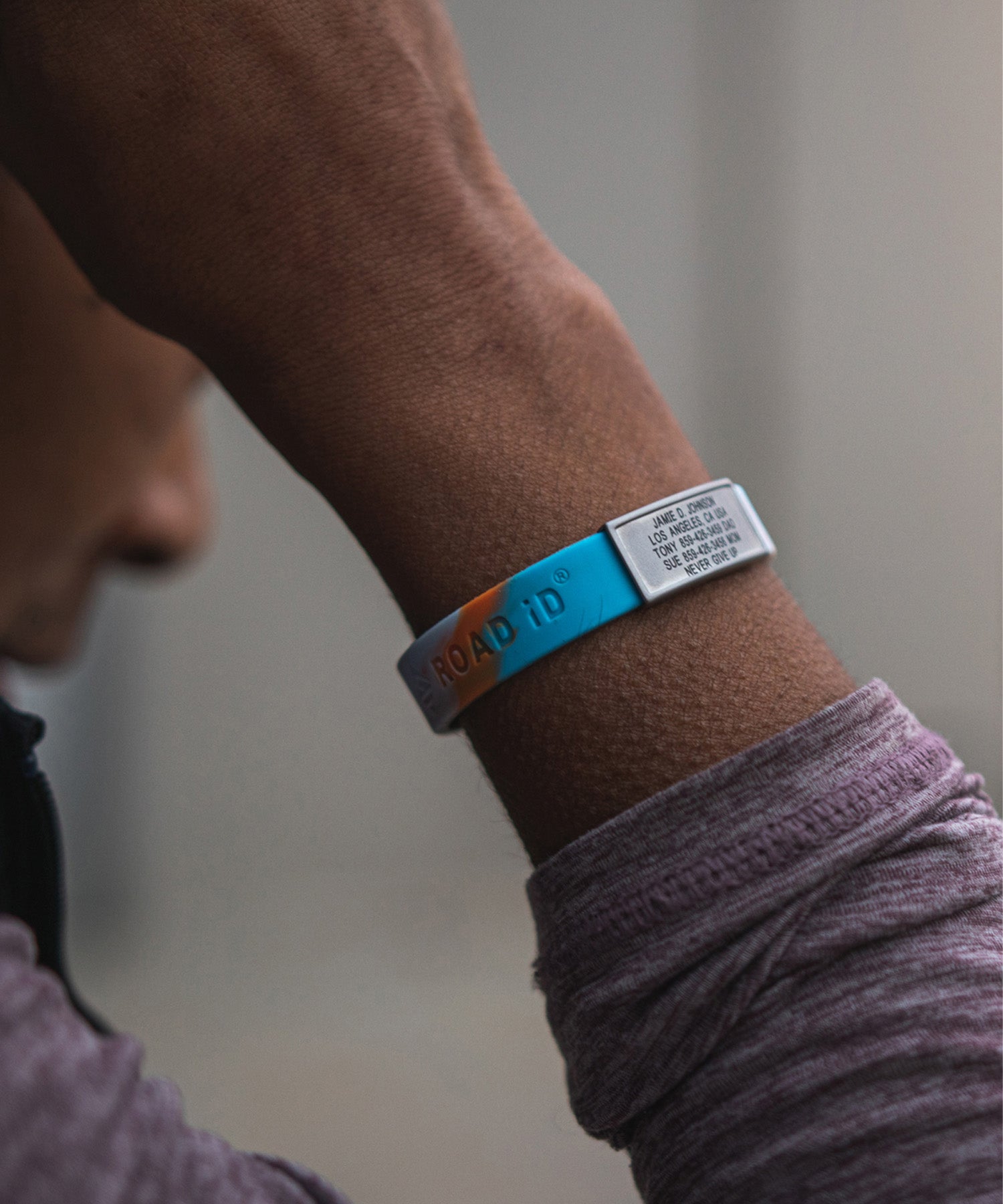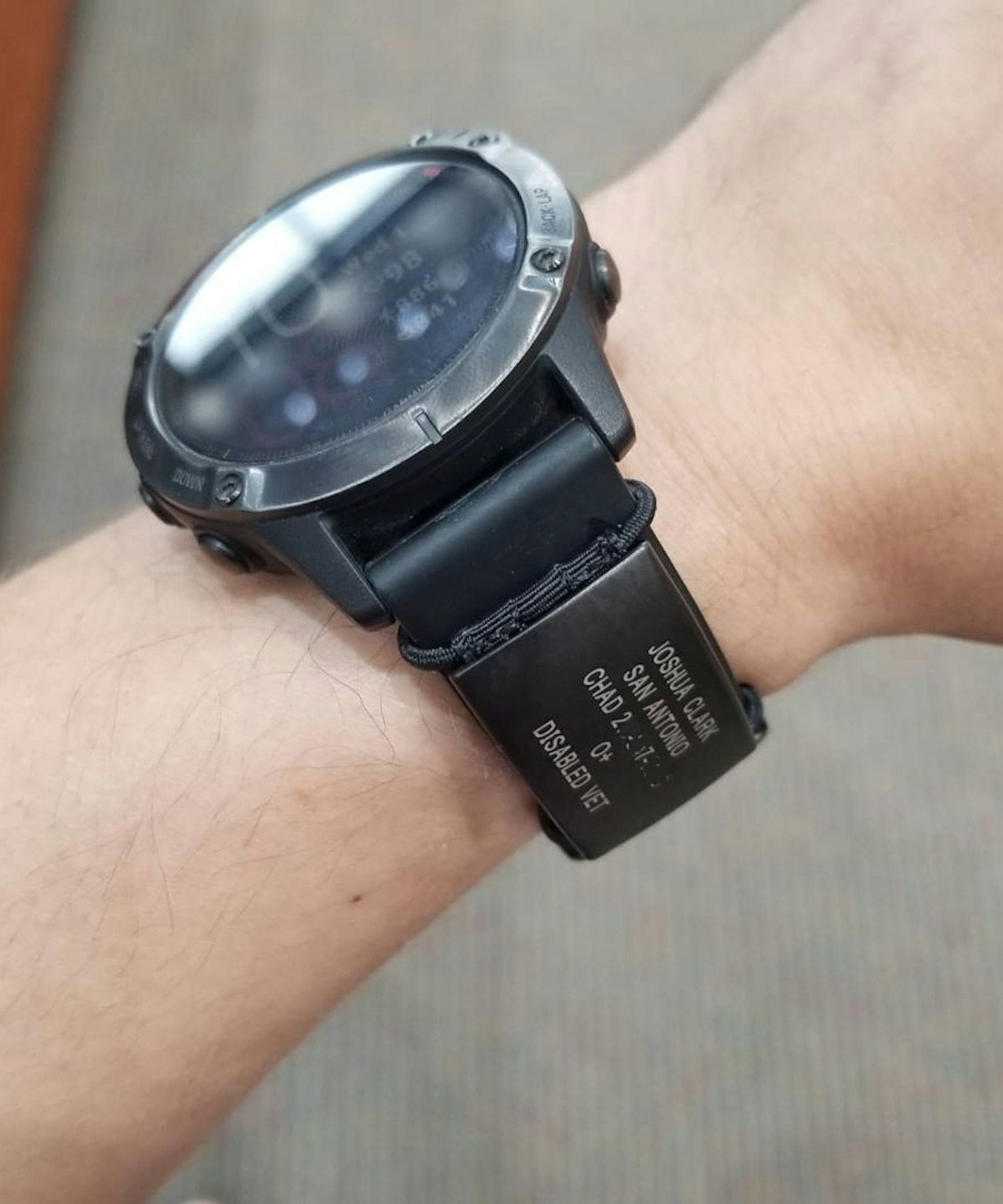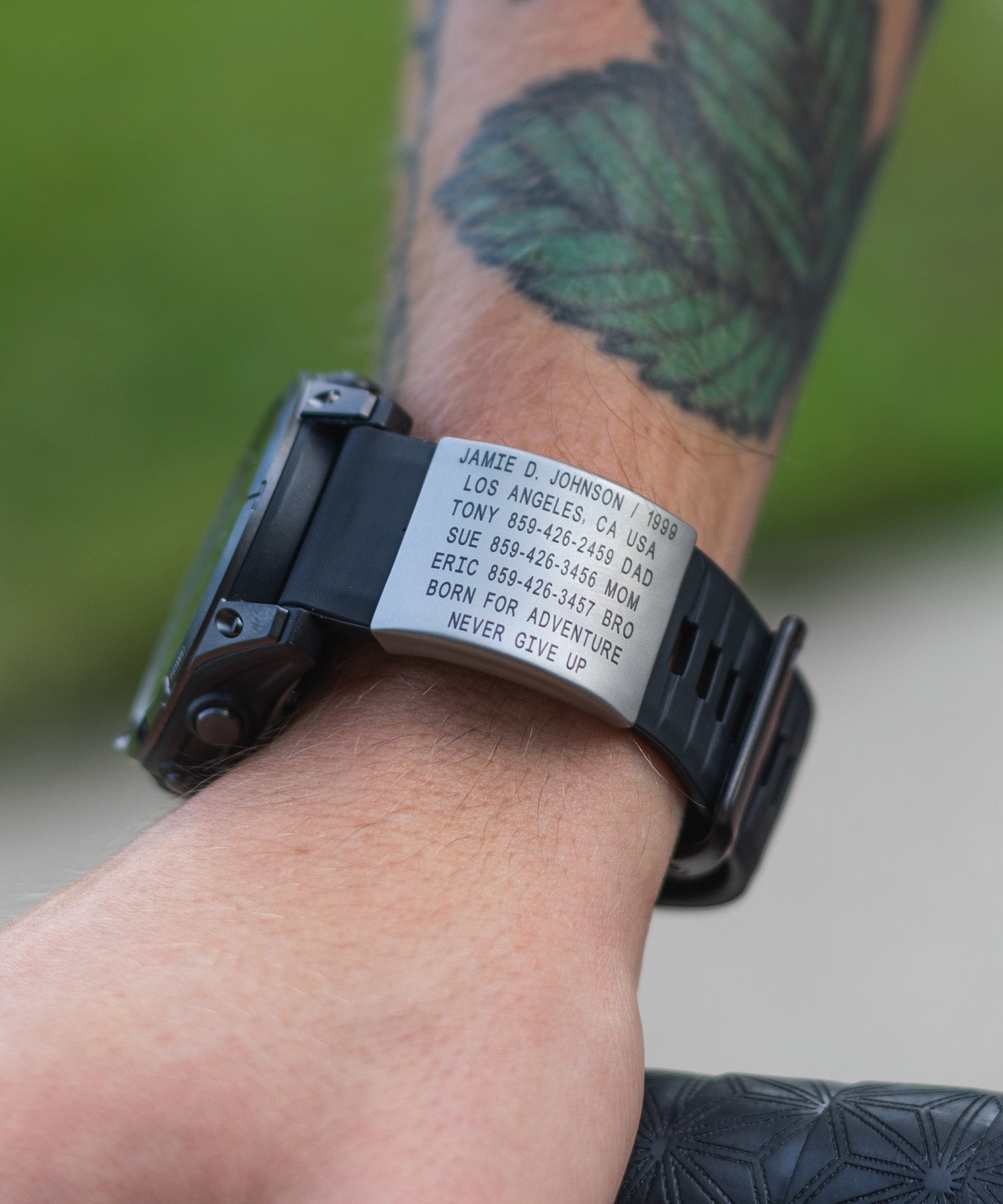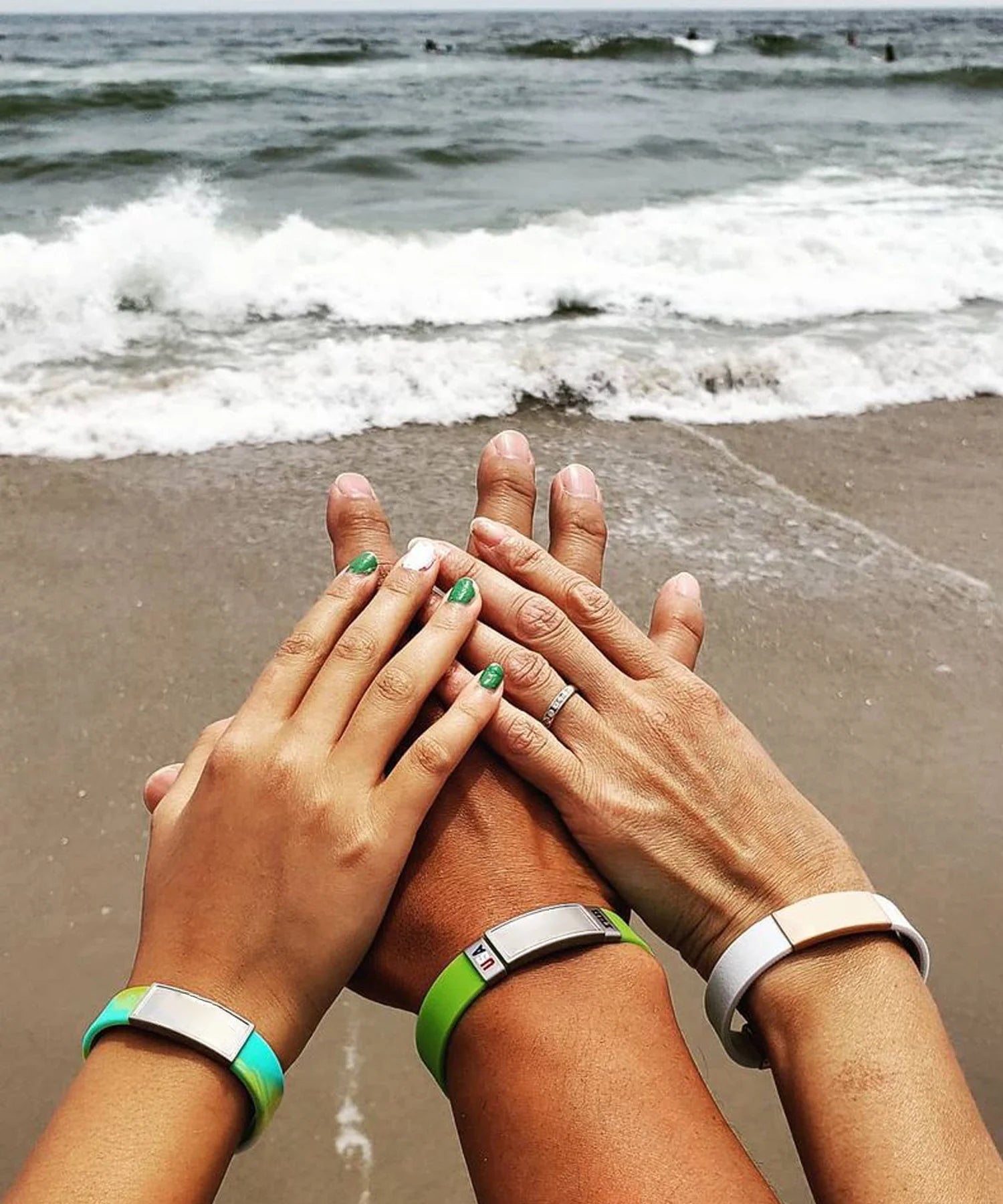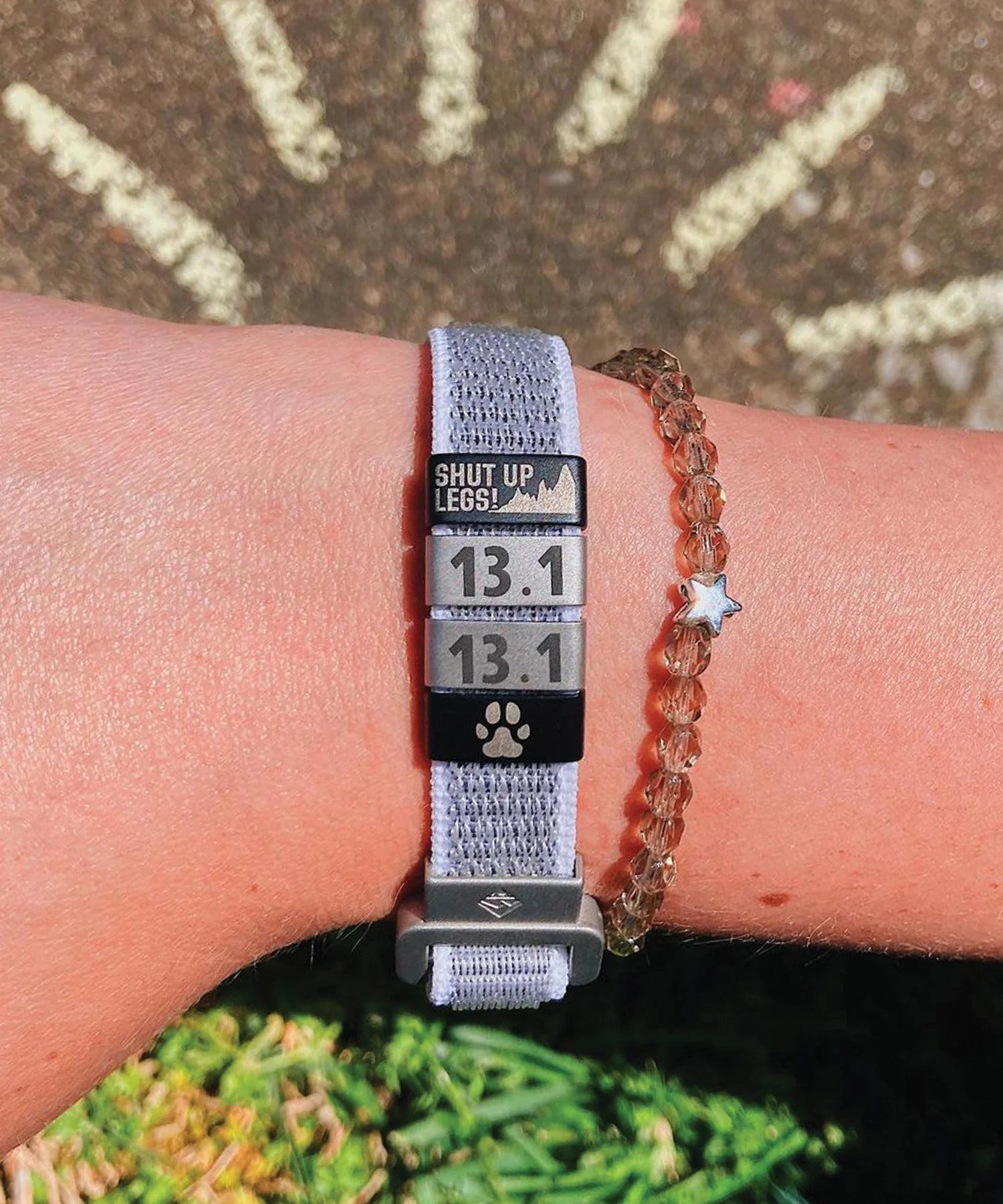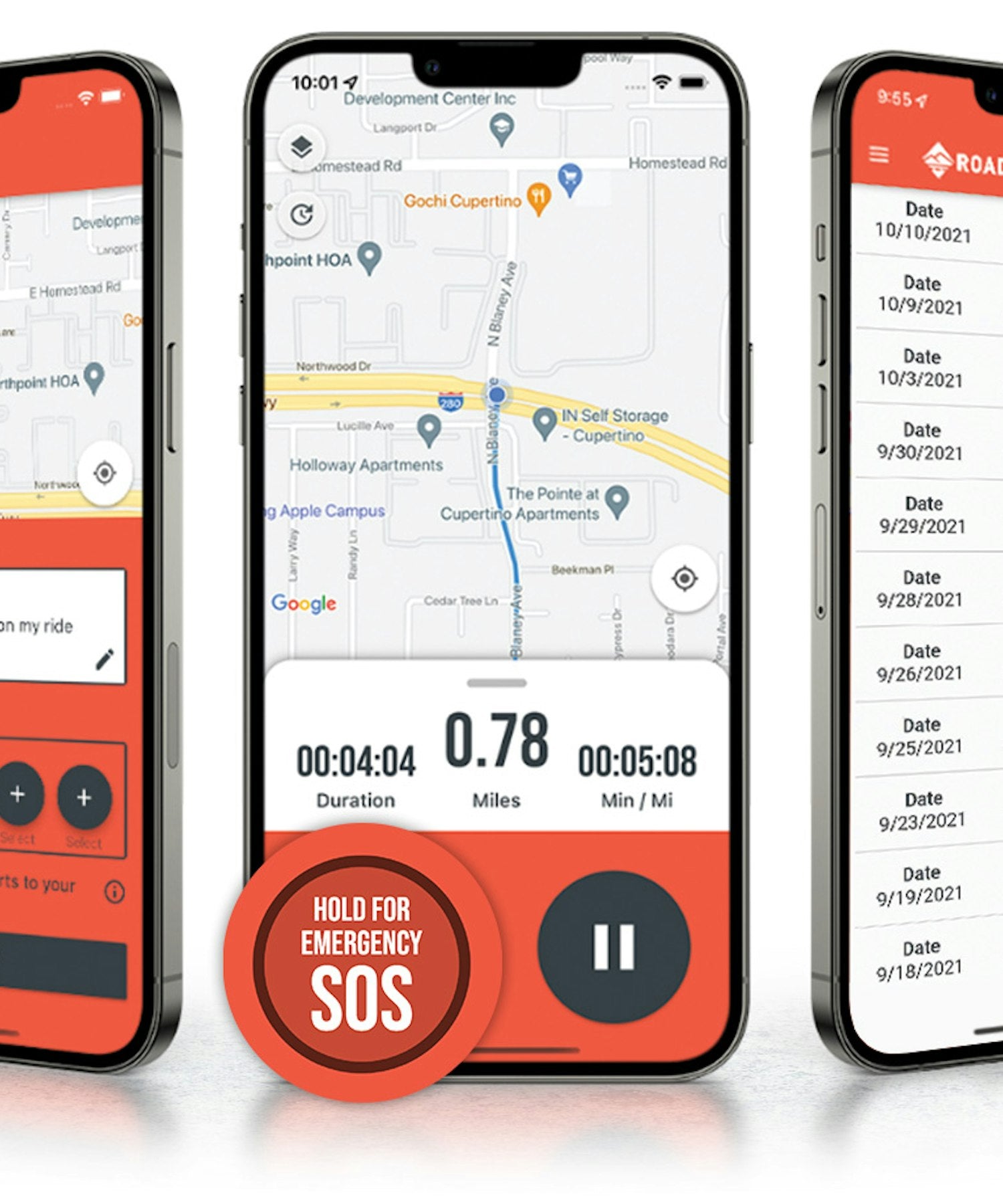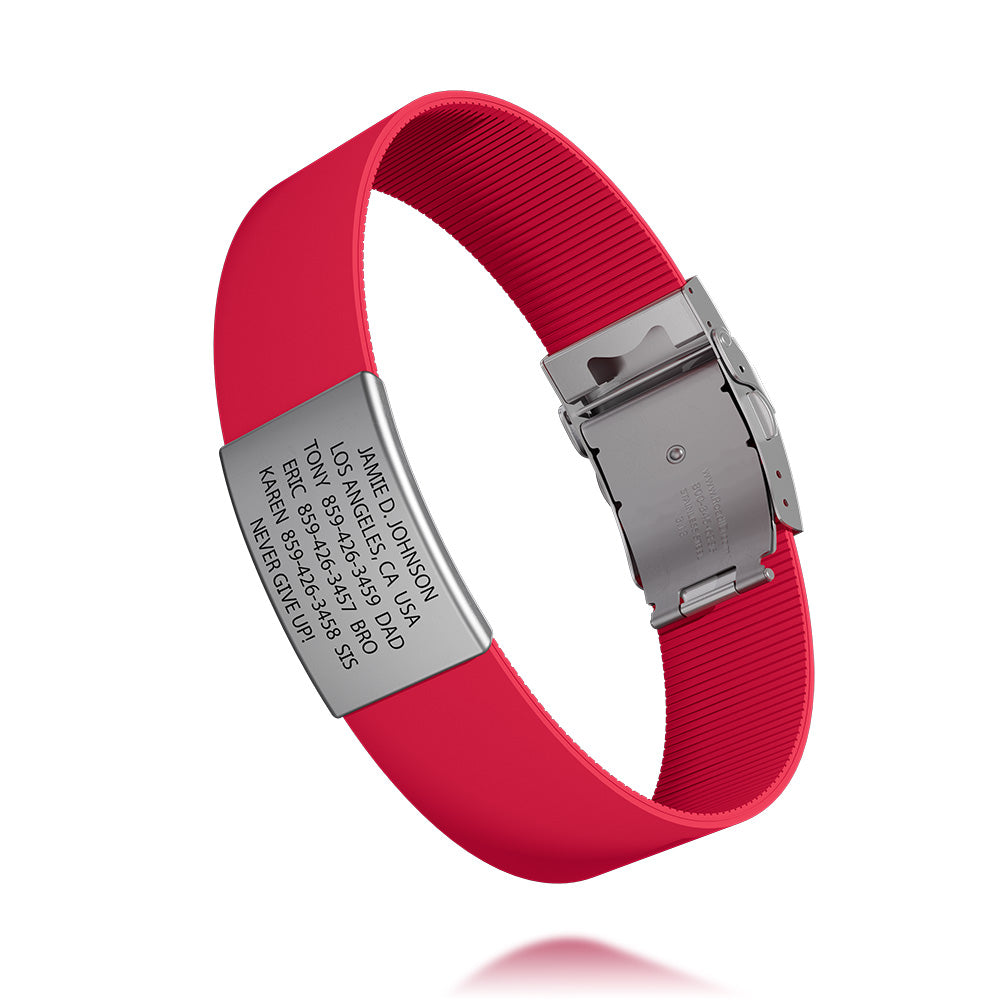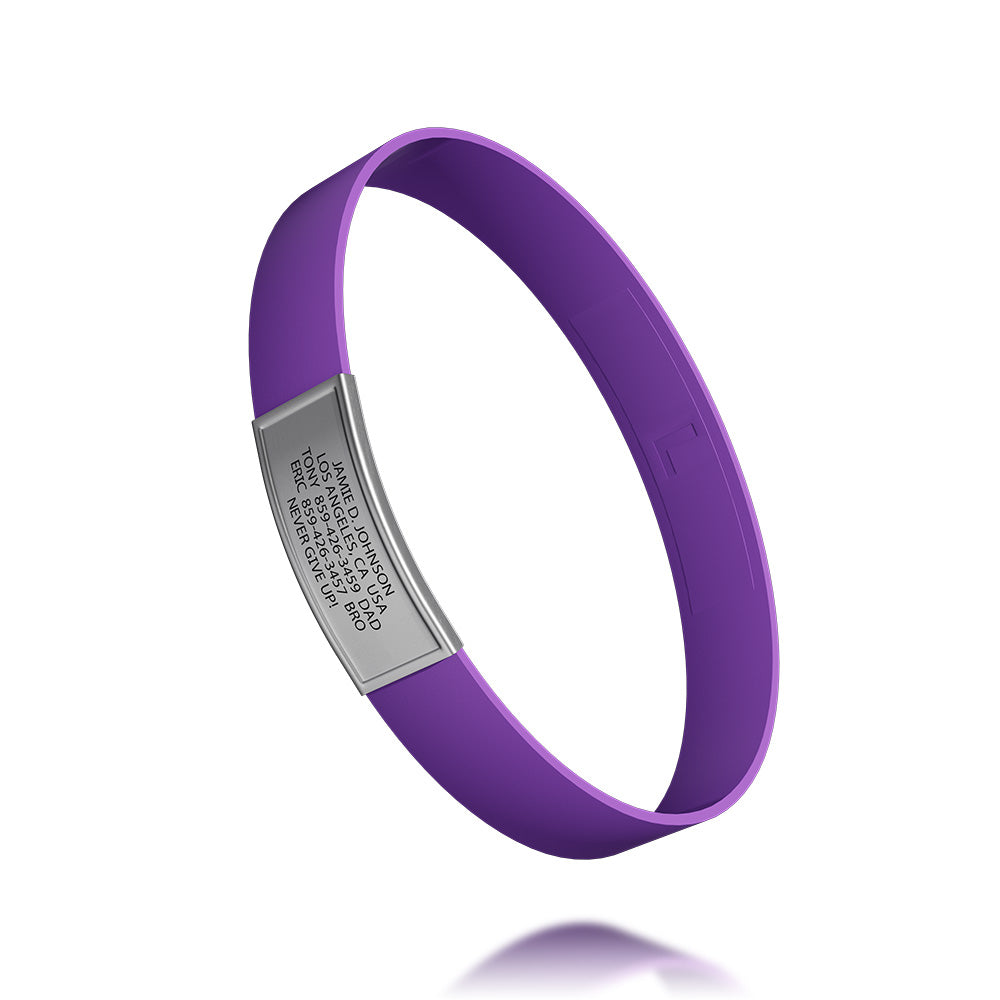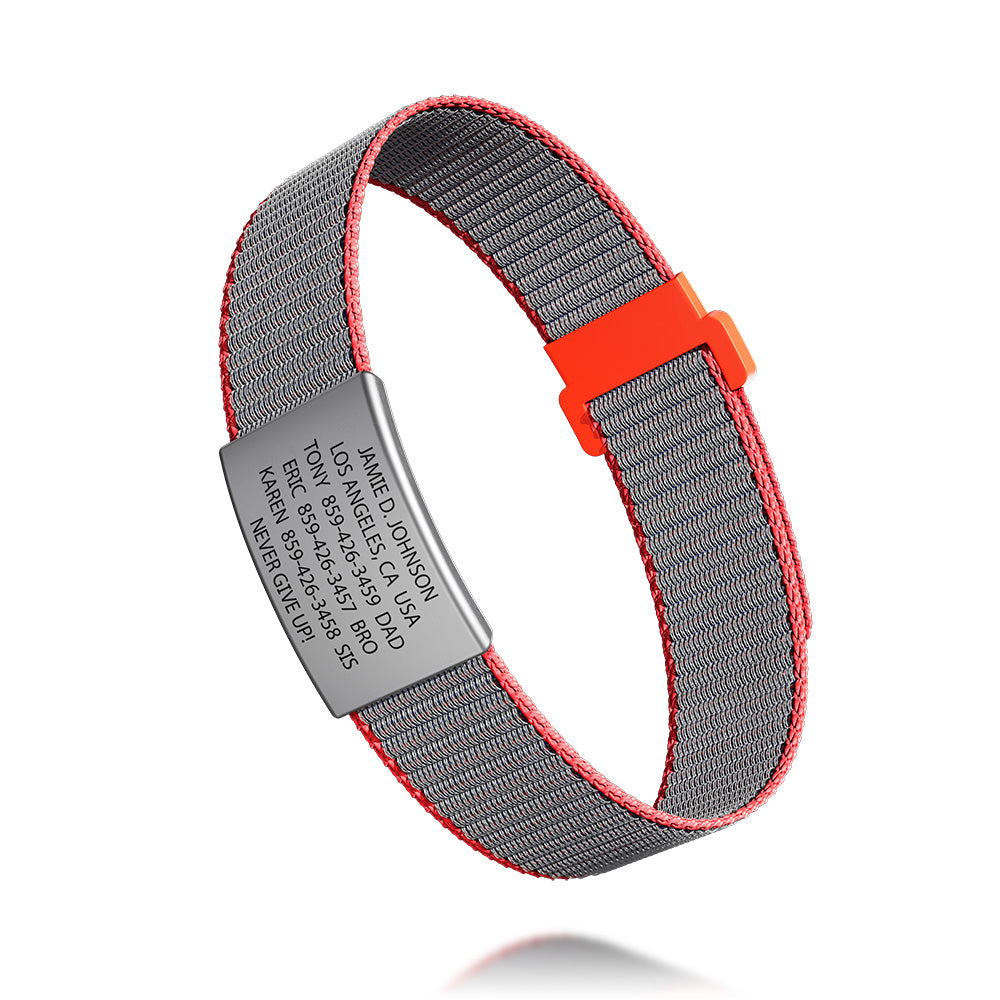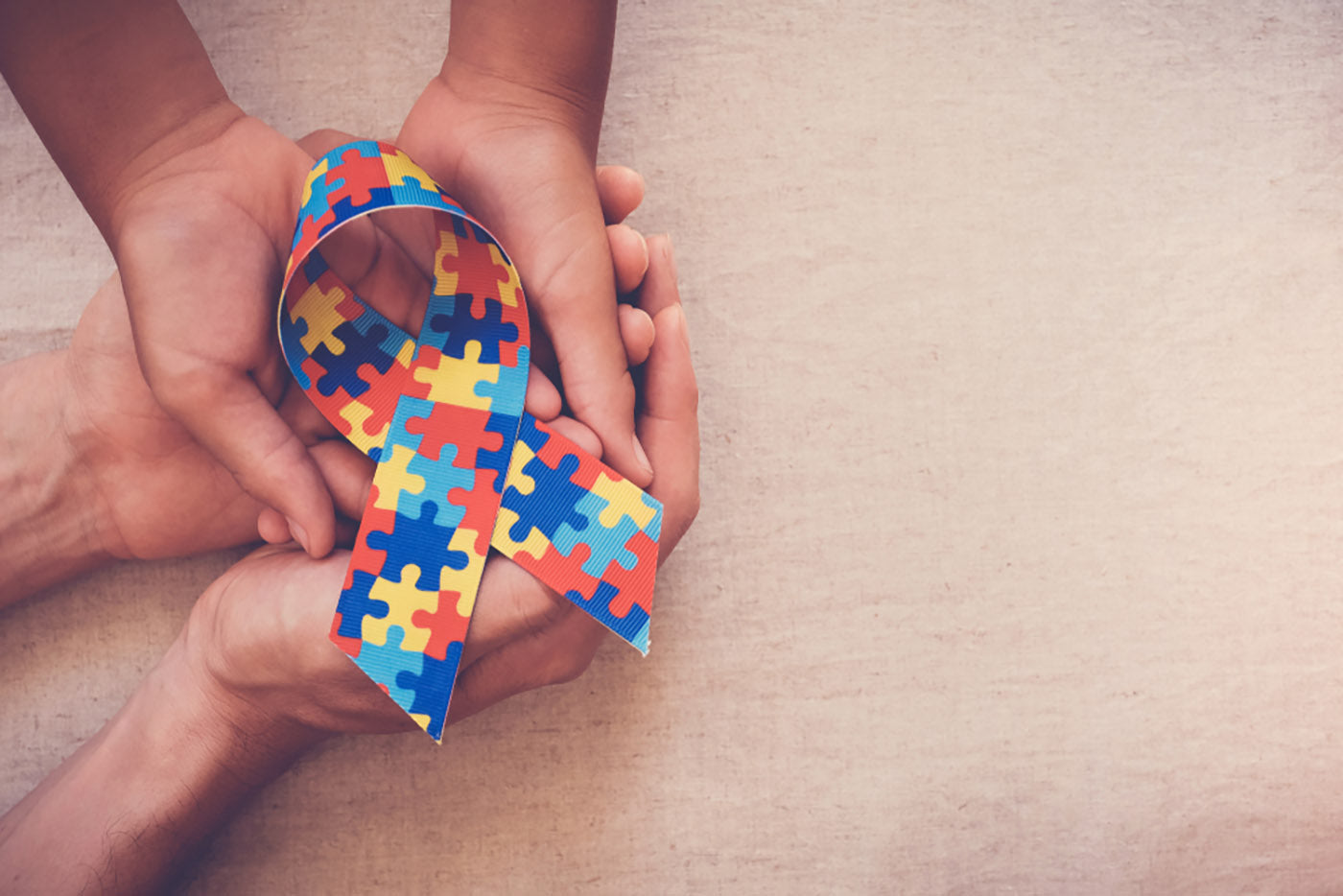Medical alert bracelets are one of the best ways for people living with medical conditions and known drug allergies to stay safe while on the go. In the event of a fall, accident or medical emergency, strangers can consult your bracelet to learn your personal information, from your name to the medication you’re on.
To ensure quick and accurate understanding, many bracelets use common medical abbreviations for health conditions and treatments. These abbreviated codes act as a universal language that healthcare professionals can recognize immediately. Keeping the information concise also allows for a clearer display, reducing potential errors during critical moments.

But there is only so much space available for engraving a medical bracelet. With limited space, medical abbreviations come into serious assistance. So, what are the common abbreviations for medical alert bracelets?
Medical Conditions
People living with medical conditions should list their conditions on their alert bracelet. Whether it’s a diabetes or Alzheimer's ID bracelet, having your medical condition listed could potentially save your life. A medical professional will be able to act accordingly once they see your medical ailments, knowing what treatments to avoid and which to focus on.
Additionally, for those with multiple conditions or known drug allergies, it's crucial to prioritize the most critical information. By doing so, you ensure that in a time-sensitive situation, responders get the essential details immediately. A well-detailed medical bracelet bridges the communication gap, especially when the wearer might be unconscious or unable to speak.
The following are useful medical abbreviations for people living with the following conditions:
Alzheimer's disease: ALZ
Aortic valve replacement: AVR
Arteriosclerotic heart disease: AHD
Atrial Fibrillation: A-Fib
Automatic implantable cardiac defibrillator: AICD
Autism Spectrum Disorder: ASD
Bipolar Affective Disorder: BPAD
Blood Pressure: BP
Borderline personality disorder: BPD
Crohn's disease: CD
Cerebral Palsy: CP
Cancer: CA
Chronic kidney disease: CKD
Chronic obstructive pulmonary disease: COPD
Chronic obstructive lung disease: COLD
Chronic obstructive airways disease: COAD
Congenital adrenal hyperplasia: CAH
Congestive heart failure: CHF
Coronary artery disease: CAD
Coronary heart disease: CHD
Cystic fibrosis: CF
Deep vein thrombosis: DVT
Diabetic ketoacidosis: DKA
Diabetes mellitus: DM
Down syndrome: DS
Difficulty of breathing: DOB
Fibromyalgia syndrome: FMS
Hypertension: HTN
Hepatitis A virus: HAV
Hepatitis B virus: HBV
Hepatitis C virus: HCV
Human immunodeficiency virus: HIV
Insulin-dependent diabetes mellitus: IDDM
Idiopathic thrombocytopenic purpura: ITP
Mitral stenosis; multiple sclerosis: MS
Mitral valve prolapse: MVP
Small airways disease: SAD
Schizophrenia: SCZ
Ulcerative colitis: UC
Allergies
Allergy bracelets are an important accessory for anyone who lives with serious allergies. Common medical abbreviations for allergies include writing “NO” or “ALGY” before whatever you’re allergic to. It being written out is imperative, as it will let a bystander or medical professional understand: a) what you can’t take; or b) what you may have come into contact with, hinting that you had an allergic reaction.
Moreover, for those who carry epinephrine auto-injectors, indicating its presence can facilitate faster intervention. In some cases, the severity of the reaction might not be immediately obvious, making the information on the bracelet even more crucial. Ensuring the bracelet is visible and easily accessible is also essential for effective and timely assistance.
Common abbreviations/words (preceded by NO or ALGY) can include:
PCN (Penicillin)
MORPHINE
OPIOIDS
SHELLFISH
BEES
NUTS
INSECT STINGS
LATEX
Medications
It’s equally important to list what medications you are on. Why? In one part, it can allow a medical professional to know what medical ailments you might have; otherwise, it could inform a physician or doctor that your medical emergency could be due to serious side effects. For example, people prescribed Warfarin (Coumadin, Jantoven), a drug that prevents blood clots, can result in serious side effects.
Listing medications can also prevent the administration of drugs that could interact negatively with what you're already taking. Furthermore, in situations where verbal communication may not be possible, your bracelet serves as a silent yet powerful voice advocating for your safety.
Certain medications, when combined, can exacerbate health issues or lead to life-threatening complications. By having this vital information on hand, you are giving healthcare providers the tools they need to offer the best possible care.
The following medications are ones that are important to list:
Acetaminophen: APAP
Antibiotic: ATB
Aspirin: ASA
Cephalosporin: CEPH
Codeine: COD
Corticosteroids: CS
Doxycycline: DOXY
Epinephrine: EPI
Auto-injector epinephrine pen: EPIPEN
Erythromycin ethylsuccinate: EES
Hydrocortisone: HC
Non-steroidal: NSAID
Nitroglycerin: NTG
Phenobarbital: PB
Penicillin: PCN
Tetracycline: TCN
Triamcinolone: TAC

Source: adriaticfoto/Shutterstock
Treatment, Resuscitation, Etc.
For some individuals, they should make it apparent what types of treatment and resuscitation methods they can, cannot and do not want to undergo. These decisions can be due to medical conditions, religious beliefs or personal preference.
It's not uncommon for individuals to have strong feelings about interventions like CPR, intubation, or the use of defibrillators. By making these wishes known on a medical alert bracelet, it ensures that in critical moments, medical professionals can respect and adhere to the patient's choices.
It also removes the burden from family members who might be uncertain or unaware of their loved one's wishes during emergency situations. Such clarity can prevent potential legal and ethical dilemmas later on.
In essence, an explicit bracelet can serve as a safeguard for individual autonomy during medical emergencies.
Consider the following abbreviations below:
No contrast dye: NO CT
Nothing by mouth: NPO
NO MRI
No chest x-rays: NO CXR
Basic life support okay: BLS
Do not intubate: DNI
Do not resuscitate: DNR
Don't hospitalize: DNH
Do not attempt cardiopulmonary resuscitation: DNACPR
You can also help a medical professional by making them aware of any serious medical treatments you have had done, including:
Intrauterine device in place: IUD
Bilateral total knee replacement: BTKR
Total hip replacement: THR
Total knee replacement: TKR
Coronary artery bypass graft surgery: CABG
What Should Be Prominent on Your Medical Alert Bracelet?
Your medical abbreviation alert bracelet should feature your most important information, things that identify you and can help a medical professional treat you if you are unconscious or cannot speak. These include:
- Your full name
- Your emergency contact information
- Medical conditions
- What you’re allergic to
- Medications you’re on
It’s important you use medical abbreviations on your bracelet, too, especially if you have a lot to list.
Unsure of what to have engraved? Talk to your primary care physician to know what your most pertinent medical information is. With that, you can effectively engrave your medical abbreviation alert bracelet, allowing you to carry your medical information with you wherever you go.
How Do I Choose What Medical Conditions To Abbreviate?
Choosing which medical conditions or allergies to abbreviate on your bracelet often comes down to prioritizing the most life-threatening or significant ones. Given the limited space on a bracelet, it's essential to focus on conditions or allergies that require immediate attention or can drastically alter treatment decisions.
For instance, a severe penicillin allergy might take precedence over a mild seasonal allergy. Consulting with your primary healthcare provider can also be beneficial, as they can offer guidance on which conditions or medications are crucial to highlight.
Additionally, considering the potential interactions or contraindications of medications and treatments in emergency scenarios can guide your choices. Ultimately, the goal is to provide the most relevant and impactful information for emergency care.
Shop Our Selection of Medical Alert Bracelets
